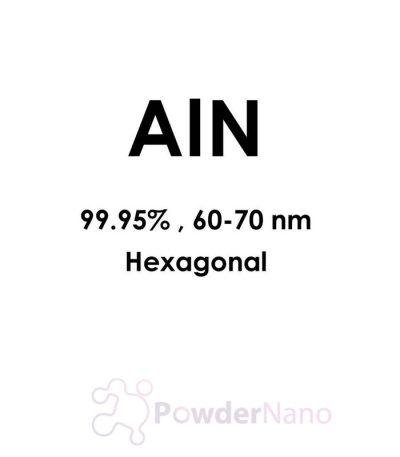Aluminum Nitride:
In the world of advanced materials, Aluminum Nitride (AlN) stands out as a remarkable compound with a wide range of applications. With its exceptional thermal and electrical properties, AlN has become a critical component in various industries, including electronics, aerospace, and optoelectronics. This blog explores the fascinating properties of Aluminum Nitride and its significant contributions to technological advancements.
1. Understanding Aluminum Nitride:
Aluminum Nitride is a compound composed of aluminum (Al) and nitrogen (N), with a chemical formula AlN. It is a covalently bonded semiconductor that exhibits excellent thermal conductivity, high electrical resistivity, and impressive dielectric properties. AlN possesses a hexagonal crystal structure, similar to that of graphite, allowing it to conduct heat along the basal plane while maintaining electrical insulation.
2. Exceptional Thermal Conductivity:
One of the most notable characteristics of Aluminum Nitride is its remarkable thermal conductivity. It outperforms other widely used thermal management materials like alumina and silicon carbide. With a thermal conductivity of approximately 180-200 W/m·K, AlN facilitates efficient heat dissipation in high-power electronic devices, such as power modules, LED packages, and microwave components. Its excellent thermal management capabilities help prevent overheating, ensuring the reliability and longevity of electronic systems.
3. High Electrical Resistivity:
In addition to its excellent thermal properties, Aluminum Nitride possesses high electrical resistivity. It acts as an electrical insulator and finds application in a wide range of electrical components and systems. AlN is often used as a substrate material in electronic circuits, hybrid microelectronics, and high-frequency devices. Its low dielectric constant and loss tangent make it suitable for high-frequency applications, enabling the design and production of advanced communication devices, radar systems, and wireless technologies.

4. Optoelectronics and Photonics:
Aluminum Nitride’s unique properties also make it an ideal material for optoelectronic and photonic applications. Its wide bandgap (~6 eV) enables AlN to transmit ultraviolet (UV) light while efficiently blocking visible and infrared radiation. This characteristic makes it highly valuable in the development of UV light-emitting diodes (LEDs), UV detectors, and high-efficiency deep ultraviolet (DUV) light sources. Furthermore, AlN’s transparency to UV radiation and its excellent thermal conductivity contribute to the fabrication of high-performance optoelectronic devices.

5. Aerospace and Extreme Environments:
The aerospace industry greatly benefits from the properties of Aluminum Nitride due to its exceptional thermal and electrical characteristics. AlN is utilized in aerospace applications where temperature variations, high-frequency communication, and radiation resistance are crucial factors. It is used in satellite communication systems, microwave components, power amplifiers, and other electronic modules required to withstand extreme environments.

6. Future Prospects and Research:
The ongoing research and development in the field of Aluminum Nitride are focused on enhancing its properties and exploring new applications. Researchers are working on improving the crystal quality, reducing defects, and optimizing the manufacturing processes to achieve higher performance. The potential utilization of AlN in emerging technologies like quantum computing, advanced sensors, and energy storage devices is being actively investigated, opening up exciting possibilities for the future.
Conclusion:
Aluminum Nitride has emerged as a key player in advancing technology due to its exceptional thermal conductivity, high electrical resistivity, and superior dielectric properties. Its remarkable performance in thermal management, electronics, optoelectronics, and aerospace applications has significantly contributed to the development of efficient and reliable systems. As research continues to unlock the full potential of Aluminum Nitride, we can anticipate even more groundbreaking applications that will shape the future of various industries.

